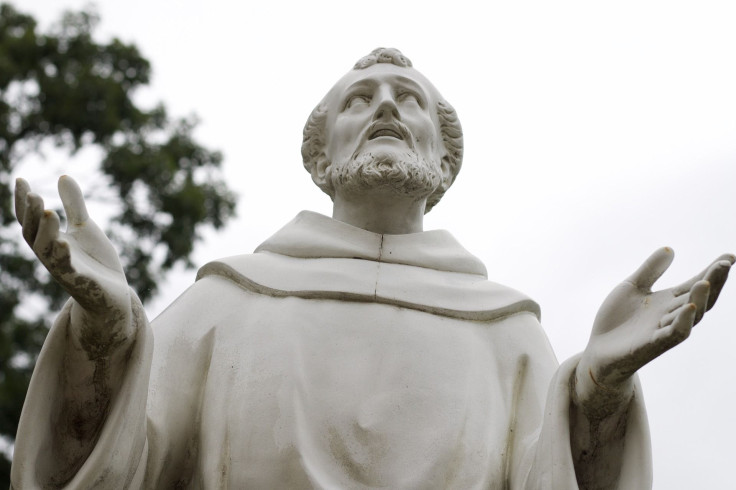Science Offers Evidence For Catholic Religion’s St. Francis Of Assisi Legend

Science has met religion when it comes to a story about an 800-year-old artifact that is linked to an important Catholic figure.
Legend has it that in the winter of 1224 an angel brought a sack of bread from St. Francis of Assisi, also known as Saint Francesco and one of two patron saints of Italy, from the saint’s location in France to a friary in Italy. What remains of the alleged “sack of Saint Francesco” is still being protected at this friary today. Researchers analyzed samples of the relic and found that science partly backs up this tale.
According to their study in the journal Radiocarbon, dating of the sack samples shows it is indeed from the 13th century, “which places the textile in the right timeframe according to the legend.”
Going into the contents of the material, the scientists did a chemical analysis to find ergosterol, an organic molecule that could be left behind from baking, the scientists wrote, although it could also be an indicator of brewing or agriculture. The team says this organic molecule backs up the idea that the sack once held bread.
While other elements of the legend, like the bread’s delivery via angel, are not confirmed or denied in the scientific analysis, the research suggests it has at least some roots in real life.
“It appears that there is a fine correspondence between the Franciscan legend and the two most decisive scientific methods relevant for analyzing the sack,” the study says. “Although it is not proof, our analysis shows that the sack indeed could be authentic.”
The friary, Franciscan Friary of Folloni, is said to have been founded by the saint himself just a few years before the bread delivery is said to have occurred, when he and another friar were denied entry to the city of Montella due to suspicion they had leprosy and walked about half a mile to forest coverage where they found shelter from snow and slept. They supposedly founded the friary at that spot. Previous research analyzing skeletons has shown that people were buried in the friary’s cemetery between around 1221 AD and 1524 AD, demonstrating continuous use of the area during that time. One individual in particular had tissue that was dated to between 1050 and 1249, “consistent with the first generation of the founders of the friary — perhaps one of St. Francis’ fellow travellers from Assisi.”
St. Francis died in 1226 and was canonized two years later.
Montella is located in southern Italy, a few dozen miles west of Naples and Pompeii, although it is in the Avellino province instead of the province of Naples. The entire area is in the Campania region of the country.
According to the University of Southern Denmark, the friary used the fabled bread sack as an altar cloth for its first 300 years before cutting it into pieces and giving those to other religious institutions around the country. Over time, pieces of the sack have been returned to the Montella friary and what is left of it is protected there.
The university’s Kaare Lund Rasmussen, a chemist and one of the researchers on the project, explained that the traces of bread left on the sack are likely at least 300 years old, which is about how long the friary began closely guarding it. The scientist said it could have come from the centuries during which the friary used the sack as an altar cloth, or from that cold night in 1224 that the legend describes.
© Copyright IBTimes 2025. All rights reserved.




















